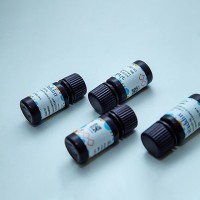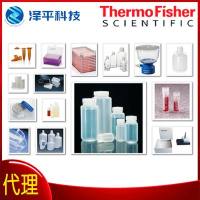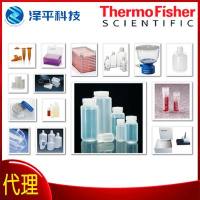SYBR Green Quantitative PCR Protocol
互联网
Ø Example .
In this experiment, we are comparing cells exposed to a certain oxidized phospholipid with cells that are not to see how this exposure effects their expression of Gene X .
Using a six-well cell culture plate, we exposed two of our wells to media (the controls) and two to the oxidized phospholipid (the exposure). We lysed the cells, collected the lysate and isolated RNA, then ran a first-strand synthesis of DNA.
We then created standards from our samples just like above and diluted our samples as above.
Sample 1 + 2 Control (no oxidized phospholipid)
Sample 3 + 4 Exposure (+oxidized phospholipid)
We’ll use the gene β-2 microglobulin (β2M ) as our internal control.
Our plate layout looks something like this:
| 1 | 2 | 3 | 4 | 5 | 6 | 7 | 8 | 9 | 10 | 11 | 12 | ||
| A | High St. 1 | St. 2 | St. 3 | St. 4 | Low St. 5 | No cDNA | 1 | 2 | 3 | 4 | |||
|
β2M |
" | " | " | " | " | " | " | " | " | " | |||
| C | |||||||||||||
| D | |||||||||||||
| E | High St. 1 | St. 2 | St. 3 | St. 4 | Low St. 5 | No cDNA | 1 | 2 | 3 | 4 | |||
|
Gene X |
" | " | " | " | " | " | " | " | " | " | |||
| G | |||||||||||||
| H |
After running in the qPCR machine, we obtain Ct values and relative quantities calculated by the program after data analysis. It calculates these quantities by comparing the Ct of your samples with the standard curve’s arbitrary values.
Since we ran duplicates of each sample, the program should average them and give you a quantity mean for each sample.
β2M is a housekeeping gene, so its expression should not change between control and exposure. Therefore, we use it as a point of comparison for Gene X’s expression.
Say we get the following data for each sample:
| Sample | β2M | Gene X |
| 1 | 14000 | 8800 |
| 2 | 13800 | 9300 |
| 3 | 12200 | 13700 |
| 4 | 12400 | 13500 |
Start by dividing Gene X ’s values by β2M ’s values. This will establish the relative values for Gene X ’s induction.
| Sample | β2M | Gene X | Gene X/β2M |
| 1 | 14000 | 8800 | .629 |
| 2 | 13800 | 9300 | .674 |
| 3 | 12200 | 13700 | 1.123 |
| 4 | 12400 | 13500 | 1.089 |
Now divide this value by the average of your control values for each one. This normalizes your control’s value to 1 and allows you to see the relative induction or reduction of your exposure samples. Average your replicates to get your final value.
| Sample | β2M | Gene X | Gene X/β2M | Normalization | Induction |
| 1 | 14000 | 8800 | .629 | 0.965 | 1 |
| 2 | 13800 | 9300 | .674 | 1.035 | |
| 3 | 12200 | 13700 | 1.123 | 1.724 | 1.698 |
| 4 | 12400 | 13500 | 1.089 | 1.672 |
In this example, Gene X in the experimental samples (3 and 4) is induced about 70% in response to exposure to the oxidized phospholipid.
Your method of analysis depends on the type of experiment you are performing. However, you will always need to normalize your data at some point, as above, in order to obtain the relative values for your gene of interest’s change in expression.
SYBR qPCR Quick Protocol
Standards
Ø Dilute the cDNA ~4-fold (e.g. 21μl sample + 59μl H2 O = 80μl)Ø Pool an appropriate amount from each sample to create standard 1 (i.e. 30μl x 12 samples = 360μ standard 1; Calculate out the final volume of your standards and try to make it as close to the final volume of your samples as possible.)
Ø Create standards as follows
o Pool 360μl standard 1 (25600)
o 1:4 90μl standard 1 + 270μl H2 O (6400)
o 1:16 90μl standard 2 + 270μl H2 O (1600)
o 1:64 90μl standard 3 + 270μl H2 O (400)
o 1:256 90μl standard 4 + 270μl H2 O (100)
Ø Mix well at each step.
Samples
Ø Dilute the remaining samples (cDNA) further in a 1:5 dilution with H2 O. For example, dilute your remaining 50μl sample in 200μl H2 O.Ø Your samples will end up being about 1/5th of the high standard.
Plate
Ø For the No cDNA wells, pipette 8μl of H2O.Ø For the standard wells, pipette 8μl of standard.
Ø For the sample wells, pipette 8μl of sample.
Ø Run each sample and standard in duplicate.
Assay
Make 12μl of master mix for each well, plus some excess1 Rxn: 10μl SYBR Green Mix 52 Rxn: 520μl SYBR
0.4μl Forward Primer (10μM stock) 20.8μl F
0.4μl Reverse Primer (10μM stock) 20.8μl R
1.2μl H2 O &n, bsp; 62.4μl H2 O
12μl per well (+ 8μl cDNA = 20μl final volume ) 624μl
Analysis
(on the ABI7500 Fast Real-Time PCR System in Dr. Steve Young’s Lab)
1.) Sign up online at http://calendar.yahoo.com with login “younglabqpcr” and password “7500abi”.
2.) Bring your plate up to MRL 4629. The ABI machine is in a room at the back right of 4629.
3.) Start up the computer and ABI7500 machine to allow it to heat up before use.
4.) Spin down your plate in the Eppendorf centrifuge for large tubes and plates just outside the ABI room. Make sure the wells are free of bubbles.
5.) Open the ABI7500 software and prepare your template.
6.) Set your standard values accordingly (25600 for the high standard down to 100 for the low standard).
7.) Set up the temperatures and times for your runs accordingly. Be sure to set it to run “standard”, not “fast”. Set the volume to 20μl and have it take data during the third step.
8.) Start the run.
9.) After the run, use the analysis tools to analyze your data. Set it to “Auto Ct” and have the program analyze. Check your standard curves for a good slope and R^2 value (the perfect slope would be 3.32, and R^2 would be 1).
10.) Analyze your data in Excel. Your method of analysis depends on your experimental design.
Ø Example .)
In this experiment, we are comparing cells exposed to a certain oxidized phospholipid with cells that are not to see how this exposure effects their expression of Gene X .
Using a six-well cell culture plate, we exposed two of our wells to media (the controls) and two to the oxidized phospholipid (the exposure). We lysed the cells, collected the lysate and isolated RNA, then ran a first-strand synthesis of DNA.
We then created standards from our samples just like above and diluted our samples as above.
Sample 1 + 2 � Control (no oxidized phospholipid)
Sample 3 + 4 � Exposure (+oxidized phospholipid)
We’ll use the gene β-2 microglobulin (β2M ) as our internal control.
Our plate layout looks something like this:
| 1 | 2 | 3 | 4 | 5 | 6 | 7 | 8 | 9 | 10 | 11 | 12 | ||
| A | High St. 1 | St. 2 | St. 3 | St. 4 | Low St. 5 | No cDNA | 1 | 2 | 3 | 4 | |||
|
β2M |
" | " | " | " | " | " | " | " | " | " | |||
| C | |||||||||||||
| D | |||||||||||||
| E | High St. 1 | St. 2 | St. 3 | St. 4 | Low St. 5 | No cDNA | 1 | 2 | 3 | 4 | |||
|
Gene X |
" | " | " | " | " | " | " | " | " | " | |||
| G | |||||||||||||
| H |
After running in the qPCR machine, we obtain Ct values and relative quantities calculated by the program after data analysis. It calculates these quantities by comparing the Ct of your samples with the standard curve’s arbitrary values.
Since we ran duplicates of each sample, the program should average them and give you a quantity mean for each sample.
β2M is a housekeeping gene, so its expression should not change between control and exposure. Therefore, we use it as a point of comparison for Gene X’s expression.
Say we get the following data for each sample:
| Sample | β2M | Gene X |
| 1 | 14000 | 8800 |
| 2 | 13800 | 9300 |
| 3 | 12200 | 13700 |
| 4 | 12400 | 13500 |
Start by dividing Gene X ’s values by β2M ’s values. This will establish the relative values for Gene X ’s induction.
| Sample | β2M | Gene X | Gene X/β2M |
| 1 | 14000 | 8800 | .629 |
| 2 | 13800 | 9300 | .674 |
| 3 | 12200 | 13700 | 1.123 |
| 4 | 12400 | 13500 | 1.089 |
Now divide this value by the average of your control values for each one. This normalizes your control’s value to 1 and allows you to see the relative induction or reduction of your exposure samples. Average your replicates to get your final value.
| Sample | β2M | Gene X | Gene X/β2M | Normalization | Induction |
| 1 | 14000 | 8800 | .629 | 0.965 | 1 |
| 2 | 13800 | 9300 | .674 | 1.035 | |
| 3 | 12200 | 13700 | 1.123 | 1.724 | 1.698 |
| 4 | 12400 | 13500 | 1.089 | 1.672 |
In this example, Gene X in the experimental samples (3 and 4) is induced about 70% in response to exposure to the oxidized phospholipid.
Your method of analysis depends on the type of experiment you are performing. However, you will always need to normalize your data at some point, as above, in order to obtain the relative values for your gene of interest’s change in expression.
SYBR qPCR Quick Protocol
Standards
Ø Dilute the cDNA ~4-fold (e.g. 21μl sample + 59μl H2 O = 80μl)Ø Pool an appropriate amount from each sample to create standard 1 (i.e. 30μl x 12 samples = 360μ standard 1; Calculate out the final volume of your standards and try to make it as close to the final volume of your samples as possible.)
Ø Create standards as follows
o Pool 360μl standard 1 (25600)
o 1:4 90μl standard 1 + 270μl H2 O (6400)
o 1:16 90μl standard 2 + 270μl H2 O (1600)
o 1:64 90μl standard 3 + 270μl H2 O (400)
o 1:256 90μl standard 4 + 270μl H2 O (100)
Ø Mix well at each step.
Samples
Ø Dilute the remaining samples (cDNA) further in a 1:5 dilution with H2 O. For example, dilute your remaining 50μl sample in 200μl H2 O.Ø Your samples will end up being about 1/5th of the high standard.
Plate
Ø For the No cDNA wells, pipette 8μl of H2O.Ø For the standard wells, pipette 8μl of standard.
Ø For the sample wells, pipette 8μl of sample.
Ø Run each sample and standard in duplicate.
Assay
Make 12μl of master mix for each well, plus some excess1 Rxn: 10μl SYBR Green Mix 52 Rxn: 520μl SYBR
0.4μl Forward Primer (10μM stock) 20.8μl F
0.4μl Reverse Primer (10μM stock) 20.8μl R
1.2μl H2 O &n, bsp; 62.4μl H2 O
12μl per well (+ 8μl cDNA = 20μl final volume ) 624μl
Analysis
(on the ABI7500 Fast Real-Time PCR System in Dr. Steve Young’s Lab)
1.) Sign up online at http://calendar.yahoo.com with login “younglabqpcr” and password “7500abi”.
2.) Bring your plate up to MRL 4629. The ABI machine is in a room at the back right of 4629.
3.) Start up the computer and ABI7500 machine to allow it to heat up before use.
4.) Spin down your plate in the Eppendorf centrifuge for large tubes and plates just outside the ABI room. Make sure the wells are free of bubbles.
5.) Open the ABI7500 software and prepare your template.
6.) Set your standard values accordingly (25600 for the high standard down to 100 for the low standard).
7.) Set up the temperatures and times for your runs accordingly. Be sure to set it to run “standard”, not “fast”. Set the volume to 20μl and have it take data during the third step.
8.) Start the run.
9.) After the run, use the analysis tools to analyze your data. Set it to “Auto Ct” and have the program analyze. Check your standard curves for a good slope and R^2 value (the perfect slope would be �3.32, and R^2 would be 1).
10.) Analyze your data in Excel. Your method of analysis depends on your experimental design.







